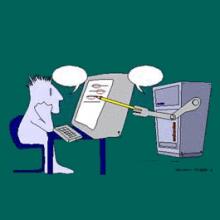Teaching children to read early is an important factor in their academic development. Ohio’s Third Grade Reading Guarantee is a program that tests a student’s ability to read at the third-grade reading level before they are promoted to the fourth grade. If a student is held back, the school develops a reading-improvement plan and provides 90 minutes of reading time each day until the student achieves a passing score. What tools can an instructor, or parent, use to assist their child when he/she is not progressing at the targeted reading level?
To meet Ohio’s Third Grade Reading Guarantee, students need 30 minutes a day of individually assisted oral reading – but you have a whole class to teach! What to do?
Fortunately, Carnegie Mellon University’s Project LISTEN (Literacy Innovation that Speech Technology ENables) has developed a one-on-one Reading Tutor that children can use on their own, even if they are just starting to read. Unlike most educational software, the Reading Tutor listens to the student read aloud and responds patiently, helpfully and supportively.
The Reading Tutor uses this innovative capability to bolster student motivation, along with the essential components of reading identified by the National Reading Panel – phonemic awareness, phonics, fluency, vocabulary and comprehension.
I find the value in technological innovation is that education is exploring opportunities to engage and enhance a students' ability to learn in meaningful ways.
The Reading Tutor individualizes instruction in several ways:
- From moment to moment, by giving spoken and graphical assistance when it notices the student get stuck, click for help or misread.
- From story to story, by taking turns with the student to choose from hundreds of readings in multiple genres at levels from kindergarten to middle school.
- Over time, by dynamically adjusting its estimate of the student’s reading proficiency.
Multiple peer-reviewed publications have evaluated pre- to post-test gains by students using the Reading Tutor compared to other treatments.
The Reading Tutor is available to most districts, at little or no cost. If you are interested in learning more about The Reading Tutor, visit the project's website or contact Jack Mostow, the Program Director at Project Listen.



